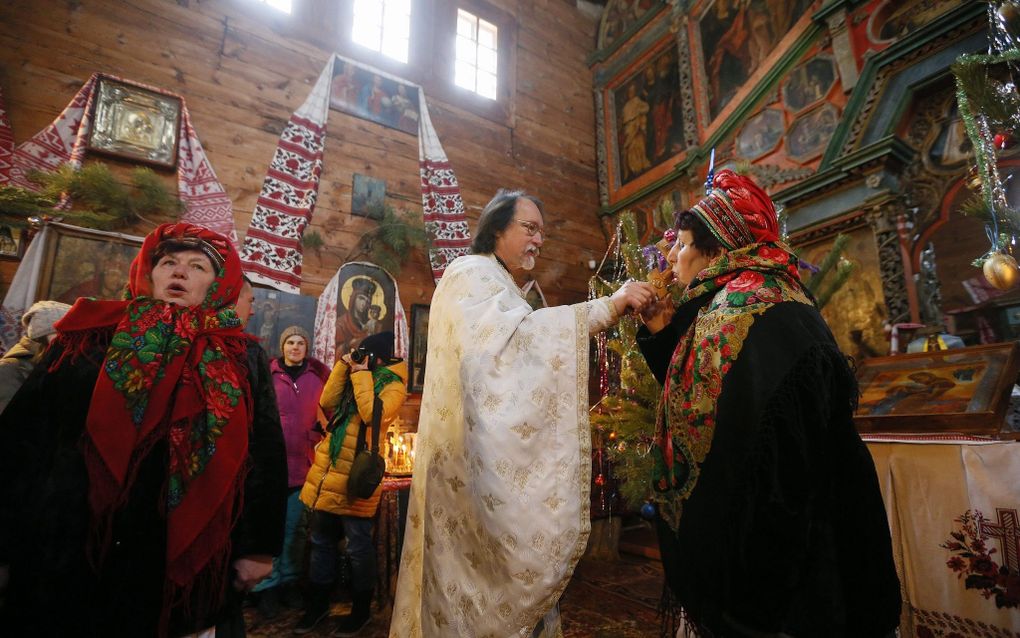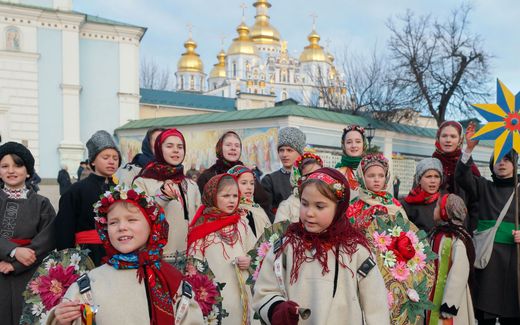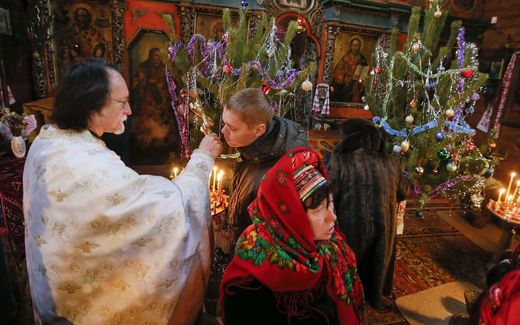Growing appetite for Christmas on ‘Western’ date in Ukraine

People attend an Orthodox Christmas service in a small church in Pirogovo village near Kiev. Photo EPA, Sergey Dolzhenko
Eastern Europe
Almost half of the Ukrainians support celebrating Christmas on the 25th of December instead of the traditional January 7th. The percentage has grown this year from 26 to 44 per cent.
That is reported by Religion Pravda. The news website quotes a sociological study of the Rating group.
The development is an almost perfect illustration of Ukraine as a border nation between the Western culture (that celebrates in December) and the Eastern culture (that waits until January). As much as the Western influences grows in Ukraine, the appetite for December increases as well.
The difference in dates has to do with the use of the Julian calendar that is used in the West. The Russian Orthodox Church has always celebrated the feast of Christ’s nativity on January 7th. All the centuries, starting with the first Russian king Vladimir’s baptism in the year 988, Ukraine was part of that Russian tradition.
Since the tension between Russia and Ukraine rose during the last years, the popularity of the Western grew. In December 2021, Metropolitan Epiphanius of the (non-Russian) Orthodox Church of Ukraine (OCU) pleaded for another Christmas date, as was reported by CNE then. His proposal was to move from the Julian calendar to the Gregorian calendar. Last October, the OCU allowed parishes officially to celebrate the early Christmas.
Both dates
The study measured not only the support for the change but also concrete plans of churches. The percentage of people who actually ‘does’ Christmas at December 25th has grown this year from 4 to 11 per cent. Another group is celebrating both dates. The December date is more popular in the west of the country.
The percentage that prefers the Eastern date is still in the majority (55 per cent) but was much higher one year ago (71). All these changes can easily be explained by the Russian invasion in Ukraine on February 24th.
About 8 per cent of Ukrainians is not interested in Christmas at all. These numbers are concentrated among young people in large cities.
Related Articles








